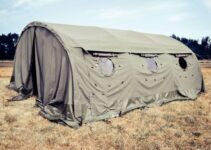Coordinate measuring machines offer accurate dimensional analysis of manufactured items. In a wide range of industries, these machines play a crucial role in the manufacturing process.
CMMs come in a range of performance levels. Choosing the best CMM to satisfy your measurement and application needs can easily become daunting with all of the alternatives at your disposal. This extensive guide will help you identify the things to consider in order to select a CMM that will satisfy your needs and deliver the best inspection report, like those of Eleymet.com.
- Consider Your Measurement Requirements
It is crucial to choose a CMM that matches your needs. The industry standard is to choose a measurement tool that is 4 to 10 times more accurate than the part tolerance that is the most challenging. The physical dimensions of the largest component to be measured are what mostly determine a CMM’s measurement range. The X, Y, and Z measuring areas of the CMM should, as a general rule, be twice as long, wide, and tall as the greatest component to be measured.
The machine’s weight capacity, which is the highest or typical weight of the piece it can support, should also be assessed. The weight of the products you will need to measure must fit within the weight limit of your CMM. There are additional factors to take into account, such as the geometric design of the object. A skilled and experienced application engineer can assist in helping you select the best CMM with the right features, including the CMM’s software, probes, and sensors, that will meet your requirements.
- Explore the Different Types Of CMMs
There are four main types of coordinate measuring machines: the bridge style CMM, the gantry style CMM, the cantilever style CMM, and the horizontal arm CMM.
- The Bridge Style CMM: This is the type of coordinate measuring device that is most prevalent. Variants include fixed bridges and movable bridges. A fixed bridge’s values are obtained by moving the table instead of the bridge, while a moving bridge’s values are calculated by moving the complete bridge across the granite foundation.
- The Gantry Style CMM: Similar to a typical bridge CMM but typically much larger is a gantry CMM. Pillars are erected on top of the bridge for the gantry-style machine, increasing the measuring volume. Gantry CMMs are a common option in aerospace and industrial applications because of their enormous volume and outstanding levels of precision.
- Cantilever CMM: The measuring head of a cantilever CMM is only attached to one side of a firm base, which limits its use to narrower measuring ranges. Cantilever CMMs are frequently employed to measure master parts and gauges.
- Horizontal Arm CMM: Despite being less accurate than other CMM types, horizontal arm CMMs are ideal for measuring sheet metal components and large-volume products. Due to the ease with which rail-mounted machines can handle large-volume parts like vehicle bodies and panels, they are particularly well-liked in the automobile industry. Additionally, because of their configurations, the two arms can access places that a bridge CMM would not be able to reach, for instance, the inside of a car.
- Opt For An Adaptable CMM
Having an all-in-one system that can adjust to your unique feature requirements is crucial if you’ll be measuring parts that have several feature characteristics. To accommodate a variety of features and material kinds, opt for a CMM system that can switch between tactile and non-contact probing.
Choosing between a manual and an automated CMM should also be taken into account, as this can impact its adaptability. A direct computer-controlled (DCC) CMM is typically your best option if your primary manufacturing setting is production-oriented. When used largely for reverse engineering or first-article inspection tasks, manual CMMs are the best option. Get a DCC CMM with disconnectable servo drives, which allows manual use as necessary, if you perform both tasks frequently and don’t want to buy two machines.
- Consider The Structure Of The CMM And Your Manufacturing Environment
You may want to take the structure of the CMM into account while making your choice. The resiliency of the equipment is a crucial factor for shop floor CMMs because these situations are more likely to cause mechanical failures from dust or impact. For CMMs used in inspection rooms, the machine needs to be a reasonable size and equipped with a flexible probe and cutting-edge software to account for all potential variances or occurrences.
The precision of a CMM can also be impacted by external factors like floor vibrations, temperature, and impurities such as grease and dirt. A deviation from the optimal air conditions that CMM manufacturers often mention could also compromise the CMM’s accuracy.
Conclusion
Getting the right CMM can be a game changer, and after reading this article, you should have a better idea of the type of CMM to acquire. However, it’s always recommended to consult an expert before making purchase.
